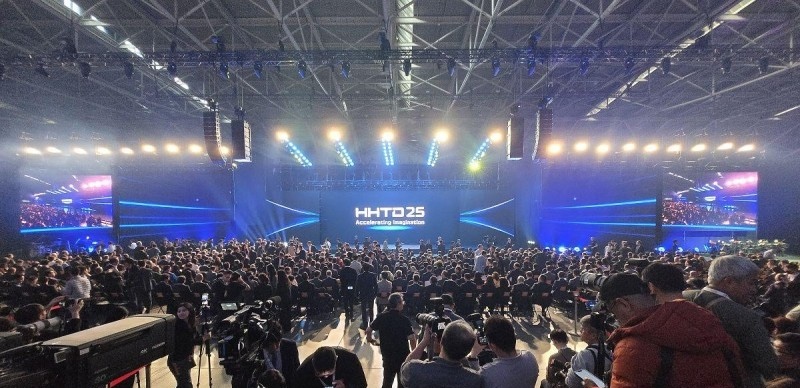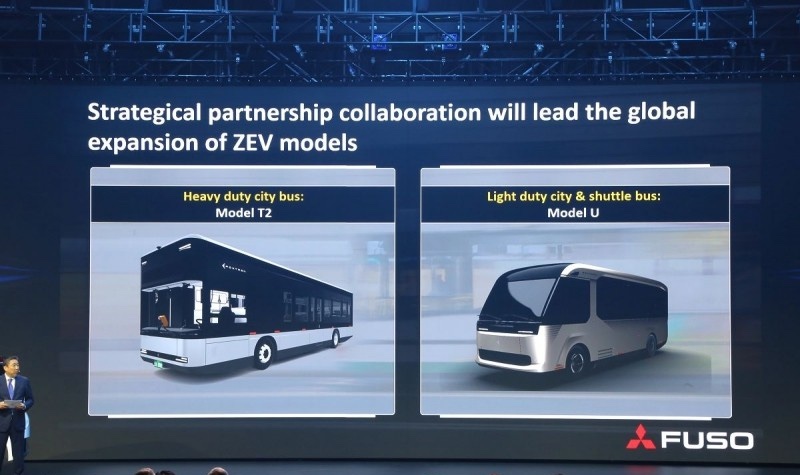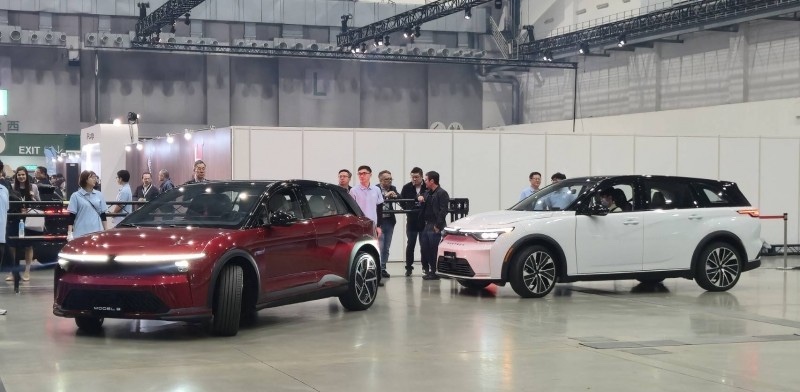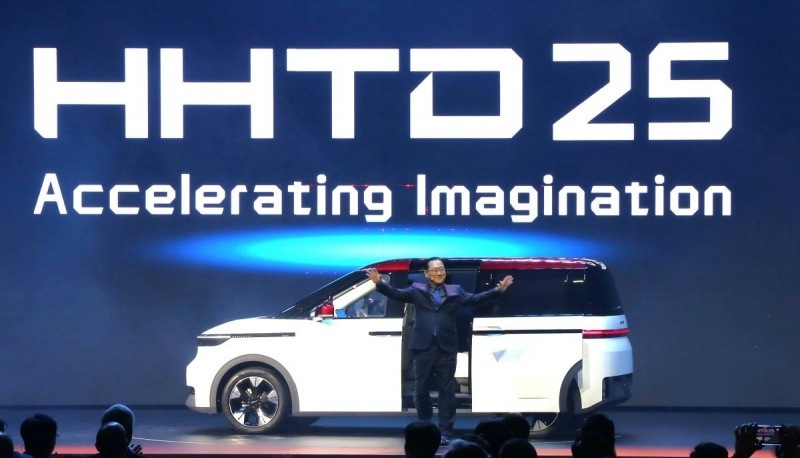This year’s visual theme focused even more closely on “AI-driven smart manufacturing,” with the spotlight on advanced applications of robotics and Digital Twin technologies. Hon Hai’s Chief Digital Officer, Bruce Shih, joined ABB and NVIDIA to share how NVIDIA Omniverse is being used to construct smart factories—signifying a new era of EV manufacturing that is more automated, faster to deploy, and more flexible. For the EV industry, this is not merely a tool, but a critical capability that drastically reduces development costs and shortens the time-to-production for new vehicle models.

On the main EV stage, Karl Deppen, President and CEO of Fuso (MFTBC), discussed the development of Japan’s electric bus market and emphasized how Hon Hai’s CDMS (Contract Design and Manufacturing Service) accelerates new model development efficiency. Hon Hai continues expanding its CDMS ecosystem—not only offering vehicle chassis platforms but also integrating manufacturing, software, batteries, mechatronics, and customized development—aiming to redefine industry standards for outsourced EV production.

The Smart EV Zone showcased Hon Hai’s vertically integrated vehicle strategy, featuring a full lineup from batteries, motors, and electronic controls to complete vehicle platforms. The Model C North American edition and test-ride area were shown alongside independent exhibits from TEEMA, MIH, and SHARP, highlighting Hon Hai’s ambition to build an open ecosystem for the EV supply chain.

In terms of vehicle models, Hon Hai’s Foxtron unveiled upgraded versions of Model D, Model U, and Model T. After co-developing with Pininfarina, Model D is positioned as an LMUV (Lifestyle MPV + SUV), further enhancing refinement and in-car technology. Equipped with a 27-inch center display and a new UI system, it demonstrates Hon Hai’s advancements in in-vehicle software.
Model U targets shuttle services, suburban transit, and corporate fleet markets. With highly flexible seating and cargo layouts, it reflects Hon Hai’s focus on commercializing mid-size buses. The operational Model T also debuted its next-generation version with self-developed batteries and motors, along with an aluminum structural body that significantly improves range and efficiency—signifying Hon Hai’s full transition toward EV bus autonomy.
Beyond the three main models, Hon Hai also showcased several mass-production versions of Model B, officially declaring that all pre-production processes have been completed. With multiple drivetrain options, interior colors, and exterior configurations, Model B is clearly aimed at the global urban EV segment.

The Model A, unveiled at the end of Day 1, embodies the “Being White” design philosophy with its minimalist purity and multi-scenario adaptability. As a B-segment MPV offering 2 to 7 seats, it suits taxi fleets, family MPVs, business shuttles, and logistics services. Its AI technologies—Smart Battery Management, Smart Thermal Management, and Smart Translate—further highlight Hon Hai’s strategy of delivering “affordable intelligent EVs.”

In battery technologies, Hon Hai announced that the Kaohsiung Hefa Battery Center has officially entered mass production. Its 230Ah cells offer up to 3,500 cycles, equivalent to around eight years of passenger-car usage. The 345Ah cells designed for energy storage systems deliver up to 10,000 cycles, signaling the maturation of Taiwan’s localized battery manufacturing capabilities. The debut of sodium-ion batteries is also a major milestone for the industry—free of regulation-limited materials and able to retain 85% of capacity at –40°C, making them ideal for cold climates and a promising low-cost solution for EVs and energy storage systems.
Notably, Hon Hai also showcased lithium-metal batteries with an energy density of 420 Wh/kg—far surpassing the 300 Wh/kg typical of current commercial EV batteries. This breakthrough opens significant enhancements in range, vehicle weight, and bidirectional power applications. Meanwhile, the ET35 battery pack designed for commercial vehicles is now installed in real-world models, demonstrating Hon Hai’s determination to advance electrification in heavy-duty transport.

Overall, the 2025 Hon Hai Tech Day was not merely a product launch but a comprehensive demonstration of Hon Hai’s full-chain capabilities across EVs, AI, batteries, and smart manufacturing. With a more mature product lineup, stronger supply-chain integration, and a more international collaboration network, Hon Hai is signaling its ambition to become the global EV industry’s behind-the-scenes giant. From the expansion of the CDMS service model to breakthroughs in AI Factory and battery technologies, Hon Hai is steadily establishing an all-encompassing EV ecosystem—from manufacturing to technology, from hardware to software—fueling anticipation for its next steps in the global electric vehicle market.